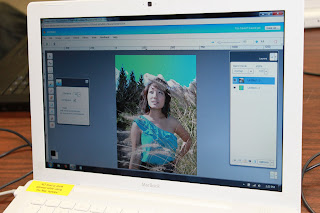- ITA Instructor -
Day 1
Today was an introductory day of Sony ACID, a music production software. Many of the students interested in this choice session have already expressed their interest in making music through using music production software or being a part of their school band. We discussed many different parts of songs including the time signature 4/4, beats per minute, and how certain sounds can either be on beat or off beat.
We also discussed the structure of current songs. We talked about the introduction, verses, pre-chorus, chorus, and bridge. We then found a current song (All Of The Lights - Kanye West) and had the students see if they could pick out the parts by just listening to the song.
Next we listened to all the different sounds involved in making the beat of this song. The students were able to pick out different horns, synthesizer, and bass. This allows the students to think of the many sounds involved in making an overall track.
After this, we went though some tools to allow the students to start making some music by going through loops, one-shots, reverse, and changing pitch. As the students started playing with they were given a group of loops and one shots provided by ITA, however they were then showed different sites where they can acquire their own loops.
www.looperman.com
www.djpain1.info
This is an example of loops the Valeria put together.
Day 2
Today we introduced to the students how to use MIDI controllers with the Apple software GarageBand. They used the controllers to make both drums and loops. GarageBand also allows you to to use your keyboard as a controller, but is easier with the MIDI controller. After much time of trying the controllers out for the first time, the students got to have a challenge of partnering up and trying to come up with some sounds.
Day 3
Today we focused on VSTs and Soundfonts in Sony ACID. The Students were able to use the MIDI controllers in ACID and download different sounds for the program. These sounds have a very wide range and allow the students to really take control of different loops they can make. Here are some examples of some loops made by an ITA student using Sony ACID and VSTs.
This is just the first step on getting students to create their own music from scratch!





























